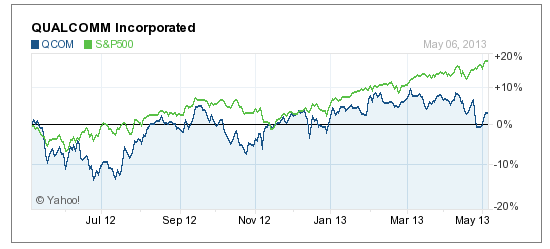Shares of restaurant operator Cracker Barrel Old Country Store (CBRL) are jumping $4 today to new all-time highs on the heels of a strong quarterly earnings report and news that it will raise its dividend by 50% to $3.00 per year, giving the $93 stock a yield of over 3%. While I do not own CBRL shares directly, Biglari Holdings (BH) is a large position in the client accounts I manage and that company owns a 20% stake in Cracker Barrel, after having started buying the stock in the 40's two years ago. That stake is now worth over $440 million and represents a majority of BH's current equity market value of $585 million.
I have written about Biglari Holdings quite a bit previously, so I suggest searching this blog for those articles if you would like to learn more on that front. What I find interesting today is that Biglari has really cornered Cracker Barrel into a position where Biglari and its shareholders can win on multiple fronts with its CBRL investment. The Biglari-Cracker Barrel relationship is a dicey one, which is contrary to many situations where a company and its largest shareholder communicate amicably on a fairly regular basis. As a 20% holder, Biglari has agitated for board seats for two years now, and has been rejected by both management and CBRL shareholders both times. Biglari's main beef was with how CBRL was being managed, and as a large holder he wanted to sit down with the senior management team and work together to improve capital allocation and get the stock price higher.
Interestingly, Cracker Barrel has been quick to dismiss Biglari's ideas publicly, only to later implement them and try and take credit. Many of those changes have contributed to the doubling of CBRL's share price over the last two years. Now that CBRL is generating excess free cash flow at a very healthy clip, they are faced with the decision of how to allocate that capital. Previously CBRL has repurchased shares, but now that Biglari Holdings owns 20% of the company (the maximum amount it can own due to a poison pill put into place by Cracker Barrel management) any share repurchases would increase Biglari's stake in the company without any additional cash investment. If that stake were to rise, Biglari's odds of gaining seats on the company's board of directors would also increase, and given the tense relationship, CBRL has no incentive to buy back stock right now.
So that leaves the issue of the company's dividend. When Biglari Holdings bought its first shares of Cracker Barrel in 2011, CBRL's quarterly dividend was 22 cents per share. Since then they have raised it on four separate occasions, more than tripling the payout to the current 75 cents per quarter rate. Cracker Barrel likely thought doing so would make Biglari happier and might cause him to be less vocal. However, that has not happened and there is every indication that he will continue to seek board seats in the future.
From Biglari's perspective, he really could not be in a better position. If Cracker Barrel hoards its cash or spends it unwisely (unprofitable unit expansion has been a core tenet of Biglari's critique), he will likely get more shareholders on his side when it comes time to re-elect the company's directors. If CBRL decides to buy back shares with its free cash flow (something Biglari has suggested they do), his ownership percentage will increase and help him in that quest.
Not surprisingly, Cracker Barrel has opted for the dividend increase approach, as it eases shareholder concerns generally and does nothing to help Biglari get on the company's board. However, it serves to funnel cash right into Biglari Holdings' bank account. So shareholders of Biglari Holdings are going to win either way; they benefit from the torrid pace of the stock price's ascent, and they are getting ever-rising dividend payments every quarter, with which Biglari can make additional investments. On BH's 4+ million share stake, that equates to over $12 million a year in dividends, which comes to about 2% of Biglari Holdings' market value.
I'll make one final observation as it relates to the merits of Biglari Holdings as an investment, since I am playing this scenario indirectly through BH stock. Before BH even purchased its first share of CBRL, its stock was trading at $400 per share. Now, two years later with that stake in CBRL worth over $440 million (and paying $12 million out annually), BH shares trade for $405. The market has not yet fully appreciated what Biglari has been building here, but I think it will just be a matter of time.
Full Disclosure: Long BH shares at the time of writing, but positions may change at any time












